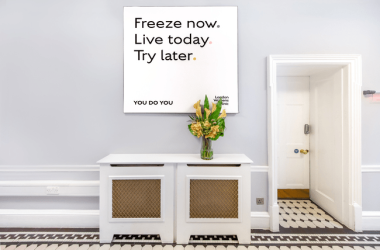Last Updated on: 29th February 2024, 11:49 am
Cold exposure therapy refers to a variety of practices that utilize cold temperatures for health and wellness purposes. While jumping into an icy lake might seem extreme, cold therapy in various forms dates back thousands of years and offers a host of science-backed benefits. As the wellness world embraces ancient traditions combined with modern science, the growing cold plunge trend makes cold therapy more accessible and popular than ever.
Ancient Cold Therapy Practices
The use of cold exposure for health goes back over 2,500 years to ancient Greek medicine and the father of modern medicine, Hippocrates. Hippocrates was a proponent of hydrotherapy, the use of hot and cold water to improve circulation and energy. Cold baths and showers were common prescriptions to treat injuries or illnesses.
In ancient Rome, cold baths concluded a visit to one of the elaborate Roman bath complexes. The cold plunge at the end was believed to increase vigor, alertness, and well-being. Roman soldiers also took regular cold baths to toughen themselves to the elements.
Religious traditions like Buddhism also used cold exposure for healing. Monks and yogis in India bathed in cold rivers as part of spiritual purification rites. Similar traditions continue in modern religious ceremonies around the world.
Benefits of Cold Exposure
Modern research has uncovered many health benefits linked to various forms of cold therapy. These include both physical effects, like reducing inflammation, and subjective benefits, like the sense of accomplishment, clarity, and positivity that often follow an intense cold plunge.
Physically, scientists believe cold exposure initiates the body’s natural anti-inflammatory response and cardiovascular protection mechanisms against the extreme stress of the cold. This leads to reduced inflammation and improved heart health over time.
Mentally, the shock of extreme cold is overwhelming at first. Adaptation to endure the cold leads to a sense of calm and optimism. The effect is likely related to the release of endorphins and other mood-boosting hormones.
Consistent cold therapy has also been linked to additional benefits like reducing pain and muscle soreness, decreasing stress hormones, burning calories, improving sleep quality, and boosting immunity.
Modern Applications
Today, cold therapy comes in many forms, from full-body ice baths to targeted ice packs or cold soaks for injuries. Whole-body cryotherapy, where the body is exposed to subzero air for several minutes, is an extreme option offered at specialty centers. No matter what the source, experts believe most forms of cold therapy produce similar benefits.
Here are some of the most popular modern applications:
- Post-Workout Recovery – Icing sore muscles or taking an ice bath after strenuous workouts reduces inflammation and speeds recovery.
- Injury Treatment – Doctors commonly prescribe cold packs or ice baths after injuries to minimize swelling and damage.
- Improved Circulation – Alternate hot and cold showers boost blood flow by expanding and contracting blood vessels.
- Boosting Immunity – Brief cold showers may raise levels of disease-fighting white blood cells.
- Healthy Skin – Colder showers frequently may tighten skin by thickening the outer layer.
- Mental Clarity – The shock of cold exposure followed by endorphins creates a sense of calm and clear thinking.
Cold water therapy has been used for health and wellness for thousands of years. While the practices may have evolved over time, the benefits have stood the test of time. With modern science also supporting regular cold exposure for reducing inflammation, boosting immunity, and improving circulation, among other perks, it is no wonder more people are braving the cold for health, accomplishment, and community. Judging by the growing cold plunge trend, we are likely to see cold therapy continuing to increase in popularity.









